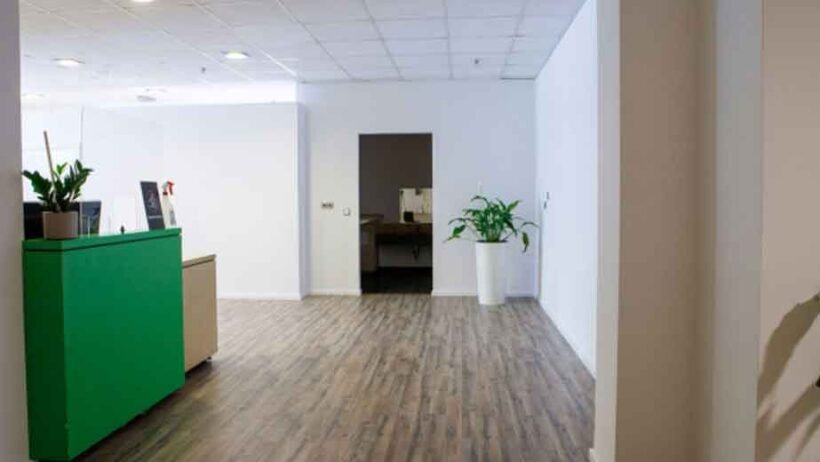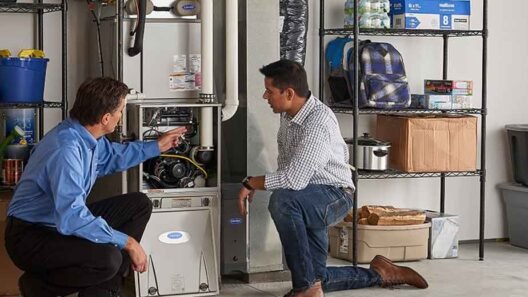There’s something almost otherworldly about witnessing a major commercial relocation in action. Massive trucks lined up with military precision, crews moving through spaces with choreographed efficiency, entire offices dematerializing from one location and rematerializing in another, it has an alien quality, like watching some advanced civilization execute a complex migration.
Commercial move planning carries stakes far beyond residential relocation. You’re not just moving possessions; you’re transferring an entire operational ecosystem while minimizing downtime that directly impacts revenue. More fundamentally, you’re creating an opportunity to align your physical environment with your brand identity and design vision in ways that support both current operations and future growth.
This matters because your physical space communicates volumes about your business. It affects employee productivity and satisfaction, influences client perceptions, and either supports or constrains how your business functions. A poorly executed move wastes this opportunity, simply transplanting old problems into new square footage.
This guide explores how to synchronize relocation strategies with design goals, ensuring your new space delivers functionality, aesthetics, and capacity for growth. We’ll examine how to choose movers who understand design considerations, coordinate between logistics and design teams, and navigate the complexities of specialized commercial spaces.
The Role of Planning in Commercial Relocation
Strategic Importance of Pre-Move Planning
Successful commercial moves begin months before the first box gets packed. Early planning identifies what your business truly needs from its new location—not just what you have now, but what you’ll need as you grow.
This assessment considers multiple dimensions. Operationally, where are the bottlenecks in your current space? What workflows feel cramped or inefficient? What growth plans require additional capacity? Financially, what’s realistic given budgets for both moving and potential fit-out work? Timeline-wise, when can you afford downtime, and how can you minimize business disruption?
Future growth planning proves particularly crucial. Spaces that barely accommodate current needs become constraining within months. Building in capacity—whether additional workstations, storage, meeting space, or infrastructure—saves costly secondary moves or expensive modifications soon after relocating.
Linking Design with Logistics
The magic happens when movers and designers collaborate early rather than working in isolated silos. This integration saves substantial time and money while achieving better outcomes.
Consider space flow planning. Designers envision traffic patterns, collaboration zones, and functional adjacencies. Movers understand the physical realities of what fits through doorways, how furniture assembles, and timing dependencies.
Planning furniture placement around core utilities, electrical outlets, data ports, lighting fixtures, HVAC vents—prevents expensive modifications after move-in. Coordinating delivery timing with construction schedules ensures materials arrive when needed rather than creating storage problems or delays.
Choosing Movers That Understand Your Design Goals
Beyond Boxes and Transport
The difference between adequate movers and excellent commercial relocation partners comes down to understanding scope. Basic movers transport items from point A to point B. True partners recognize they’re facilitating business transformation, not just hauling furniture.
This distinction manifests in how they approach the project. Do they ask about your design vision and business model? Do they anticipate challenges specific to your industry? Do they coordinate proactively with other stakeholders, or do they simply show up on moving day expecting everything to be ready?
For businesses in urban centers, finding experienced movers in Melbourne CBD who understand the logistical complexities of city locations—restricted access times, parking limitations, elevator scheduling, and building regulations—can make the difference between smooth transitions and chaotic disruption.
Questions to Ask Movers
Vetting potential movers requires asking questions that reveal their ability to support your design vision:
Do they coordinate with design teams and contractors? The best movers actively participate in planning meetings, understand design timelines, and communicate proactively about dependencies and potential conflicts.
Can they handle specialty spaces with unique requirements? Different commercial environments demand different expertise. Medical facilities have hygiene standards and equipment sensitivity. Retail spaces require careful handling of displays and inventory. Restaurants need specialized commercial kitchen equipment transport.
How do they protect custom furniture, fixtures, and finishes? Custom pieces often represent significant investment and brand identity. Ask about protective methods for delicate surfaces, custom cladding, artwork, or architectural features.
What’s their approach to IT and sensitive equipment relocation? Server rooms, laboratory equipment, and specialized machinery require planning beyond standard furniture moving.
Can they provide references from similar businesses? Past clients in your industry or with comparable design complexity offer the best insight into whether movers can deliver what you need.
Designing the New Space During the Move
Aligning Brand Vision With Layout
Relocation offers a rare opportunity to intentionally design spaces that embody your brand rather than simply fitting your operations into whatever layout you find. This alignment starts with clarity about what your brand represents and how physical space can express those values.
Companies prioritizing transparency and collaboration might embrace open layouts with glass-walled meeting rooms and collaborative zones. Brands focused on wellness could incorporate natural materials, biophilic elements, and dedicated wellness areas. Client-focused businesses might invest heavily in impressive reception areas and comfortable client spaces even if back-of-house areas remain utilitarian.
Translating corporate identity into floor plans requires thinking about the employee and client journey through your space. What impressions do you want to create? What behaviors do you want to encourage? What functional needs must be met for operations to run smoothly?
Specialised Spaces and Requirements
Certain industries face unique constraints that fundamentally shape design possibilities. Healthcare facilities exemplify this complexity—they must balance welcoming aesthetics with stringent hygiene requirements, accessibility standards, and medical equipment needs.
Medical clinic fitouts Melbourne specialists understand these competing demands, designing spaces that feel warm and professional while meeting healthcare regulations, accommodating specialized equipment, and supporting efficient clinical workflows. The coordination between these specialized fitouts and commercial movers becomes crucial, medical equipment often arrives on specific timelines, installation must happen in particular sequences, and certain spaces need completion before equipment installation can proceed.
Educational institutions navigate different challenges around safety, accessibility, and spaces supporting various learning modalities. Retail environments balance customer experience with security, inventory management, and flexibility for seasonal changes. Each context requires movers and designers who understand industry-specific needs.
Balancing Functionality and Aesthetics
Prioritising Core Business Needs
Beautiful spaces that don’t support actual work are failures regardless of their aesthetic appeal. Successful design starts with honest assessment of must-have features that enable your business to function.
What are your true operational requirements? Adequate electrical capacity and data infrastructure for your technology needs. Appropriate lighting for the work being performed. Ergonomic furniture supporting employee health and productivity. Storage for materials and equipment. Meeting spaces sized appropriately for typical usage.
Smart planning ensures essential utilities, IT setups, and ergonomic furniture align with design goals rather than conflicting with them. This might mean running data cabling through ceiling spaces planned for exposed structure, or ensuring sit-stand desks fit within planned workspace dimensions, or confirming meeting room locations have appropriate power for presentation equipment.
Aesthetic Enhancements
Within the functional framework, aesthetic choices transform utilitarian spaces into environments that inspire, motivate, and communicate brand identity.
Finishes selection dramatically impacts how spaces feel. Natural materials create warmth and organic qualities. Industrial finishes suggest innovation and authenticity. Sleek contemporary materials convey sophistication and modernity. The choices should reflect brand identity while considering durability and maintenance realities.
Partitions and space division balance openness with acoustic control and privacy needs. Glass partitions maintain visual connectivity while providing sound barriers. Modular systems allow future reconfiguration as needs evolve.
Lighting might be the single most impactful design element. Quality lighting affects mood, productivity, and how spaces are perceived. Natural light should be maximized wherever possible, supplemented with thoughtfully designed artificial lighting that provides adequate illumination without harshness.
Sustainable materials aren’t just environmentally responsible—they often contribute to healthier indoor environments and appeal to employees and clients who value sustainability. This alignment with wellness and productivity in commercial interiors creates genuine business value beyond environmental benefits.
Communication Between Movers and Designers
Setting Clear Roles and Expectations
Successful projects require crystal-clear delineation of responsibilities. Who manages what aspects of logistics, installation, and layout adjustments? Where does the mover’s responsibility end and the designer’s or contractor’s begin?
Establishing this clarity upfront prevents the finger-pointing that occurs when problems arise. Put agreements in writing: who’s responsible for furniture assembly, who handles IT equipment setup, who manages coordination with building management, who’s accountable if delivery timing causes delays.
Regular coordination meetings—weekly during intensive planning phases, daily during the actual move—keep everyone informed about progress, challenges, and necessary adjustments. These meetings should include representatives from moving companies, design teams, contractors, IT personnel, and business leadership.
Avoiding Common Misalignments
Most moving problems stem from communication failures rather than technical inability. Understanding common misalignment patterns helps you avoid them.
Miscommunication about delivery timelines frequently causes cascading problems. Furniture arriving before flooring installation is complete creates storage challenges and potential damage. Conversely, spaces sitting empty because furniture delivery is delayed wastes time and delays occupancy.
Creating clear master schedules with dependencies explicitly mapped prevents many timing issues. This schedule should identify milestones, sequence dependencies (what must happen before what else can proceed), and contingency plans for likely delays.
Joint accountability—where moving teams and design teams share responsibility for overall project success rather than just their individual components—encourages proactive problem-solving rather than defensive territorialism.
Managing Specialized Equipment and Sensitive Installations
Sensitive Equipment Relocation
Certain items demand extra care during relocation due to sensitivity, value, or criticality to business operations. IT servers and networking equipment can’t simply be tossed in boxes—they require careful disconnection documentation, protective packaging, climate-controlled transport, and precise reinstallation.
Laboratory equipment often includes delicate instrumentation requiring specialized handling, potential recalibration after moving, and careful environmental control during transport. Medical equipment similarly needs specialized handling, often with manufacturer requirements for transportation and reinstallation.
Experienced commercial movers understand these requirements and have developed systems for safe relocation. This might include custom crating, climate-controlled vehicles, specialized insurance, and coordination with equipment manufacturers for post-move testing and certification.
Fit-Out Considerations
Modern commercial moves often involve simultaneous fit-out work—new furniture installation, fixture mounting, technology setup, and finish work happening concurrently with or immediately after the physical move.
This integration requires tight coordination. New fixtures might need installation before certain furniture arrives, or furniture placement might need completion before fixture mounting can happen. Getting the sequence right prevents rework and delays.
Medical, retail, and hospitality environments have particularly complex fit-out requirements. Medical spaces need specialized casework, examination equipment, and often medical gas lines or specialized electrical systems. Retail requires display systems, point-of-sale infrastructure, and often specialized lighting. Hospitality spaces need commercial kitchen equipment installation coordinated with extensive plumbing and electrical work.
Sustainability and Cost Efficiency in Commercial Moves
Eco-Friendly Moving Practices
Sustainability increasingly influences commercial decision-making, and relocation offers opportunities to demonstrate environmental commitment.
Recyclable packing materials reduce waste—using reusable plastic bins instead of cardboard boxes, for instance, or biodegradable packing materials rather than styrofoam. Many commercial movers now offer sustainable packing options as standard or premium services.
Reusing existing furniture where possible rather than automatically purchasing everything new saves money while reducing environmental impact. Sometimes furniture just needs refurbishment or reconfiguration rather than replacement. Donating usable furniture you can’t accommodate in the new space provides tax benefits while keeping items out of landfills.
Aligning with Sustainable Design
Relocation creates natural moments to upgrade sustainability features. Energy-efficient lighting systems pay for themselves through reduced utility costs while supporting green credentials. Smart HVAC systems optimize climate control, reducing energy waste.
Flexible layouts using modular, reconfigurable elements allow future adjustments without demolition and reconstruction. This longevity mindset—designing for adaptation rather than eventual disposal—embodies sustainable thinking.
Using the move as an opportunity to refresh sustainable branding demonstrates authentic commitment rather than superficial greenwashing. When your physical space reflects stated environmental values, it reinforces credibility with employees and clients who care about sustainability.
Post-Move Adjustments and Final Design Alignment
Fine-Tuning the New Space
Even meticulously planned moves require adjustments after completion. Furniture that looked perfect in planning might need repositioning once you experience actual workflow. Lighting that seemed adequate might need supplementation in certain areas. Storage solutions might need reconfiguration based on actual usage patterns.
Budget time and resources for these last-mile adjustments. They’re normal, not failures of planning. Complex projects inevitably reveal unanticipated details once occupied.
Branding signage installation often happens in the final stages after major construction and moving complete. This includes reception area signage, wayfinding throughout the space, and any branded environmental graphics reinforcing identity.
Employee and Client Experience
Successfully occupying new space requires more than physical arrangement—people need onboarding to the new environment.
Employee orientation should cover practical details: where things are located, how new systems work, whom to contact with questions. It should also address the vision behind design choices, helping staff understand and appreciate their new environment.
Creating welcoming environments that reflect long-term design vision requires attention to details beyond furniture and fixtures. Artwork, plants, ambient music in reception areas, even scent choices contribute to overall experience. These finishing touches transform generic commercial space into branded environments.
Conclusion
Commercial moves succeed when logistics and design vision work hand-in-hand rather than as disconnected activities. The companies that navigate relocations most successfully recognize that moving isn’t just transportation, it’s transformation, an opportunity to create spaces that better serve operations, embody brand identity, and support future growth.
Selecting movers who understand specific needs, whether specialized requirements like medical clinic fitouts or the unique challenges of urban commercial districts, ensures both efficiency and aesthetic achievement. When moving teams function as partners rather than just service providers, coordinating with designers and understanding how physical space serves business goals, the results exceed what either could achieve independently.
This collective, almost non-human intelligence emerges from coordination between diverse specialists, enabled by planning systems and logistics technologies, resulting in transformations that serve very human needs for spaces that inspire, support, and empower the work happening within them.








